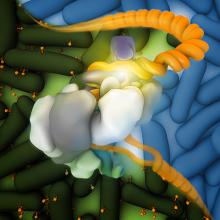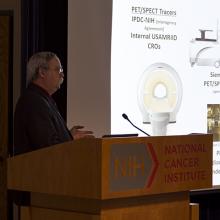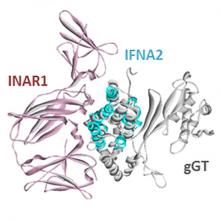NCI Scientists Get Deep Look at CRISPR Complex Through Deep Freeze
To get a closer look at one CRISPR complex, researchers from NCI’s Center for Cancer Research and their collaborators recently put it “on ice” with cryo-electron microscopy, creating highly detailed images that show its biological structures in multiple states at a molecular level.






